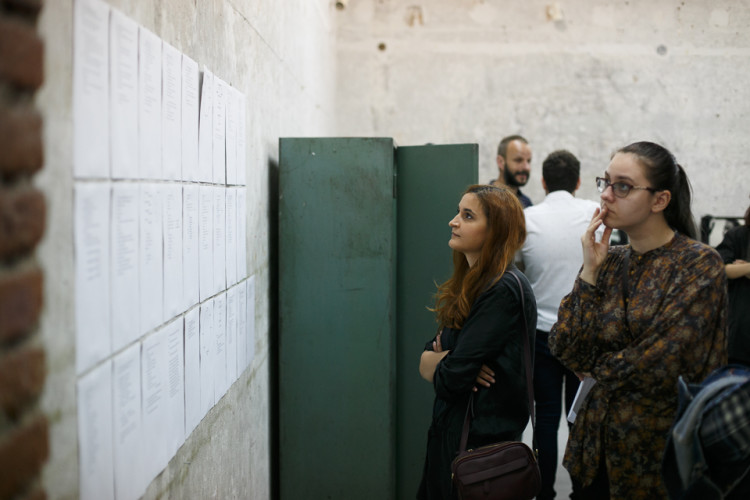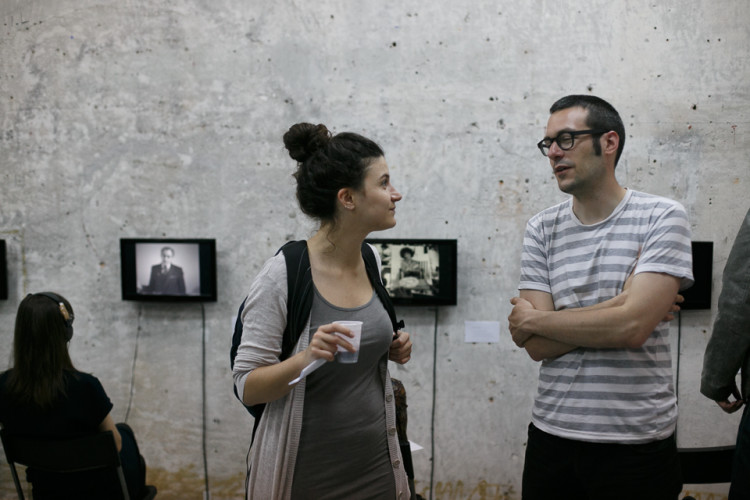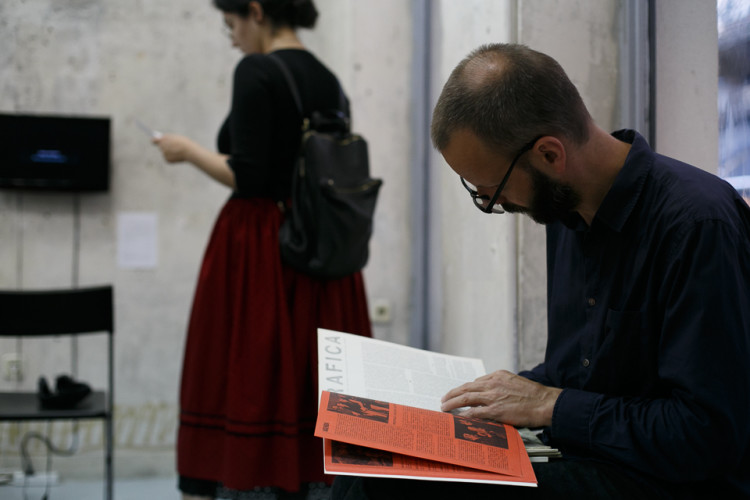It has been put forward that in the future the chimeras of schizophrenics should not be considered illusions
All evolved life-forms posses non-coded introns and coded exons
knots are primary mechanisms for rejecting
the logic
that has been self-imposed and, throughout time, developed in order to serve as the molecular base
for other types of rejection, the rejection of thoughts and impulses
in the human mind
that are incompatible with the existing environmental conditions.
//reads the self-isolation of subcultures who grow exasperated by the existing environmental conditions//
Psychologists often regard the delirium and hallucinations of schizophrenics as a loss of the limits of the ego
Due to the fact that these glial receptors or “chimeras” cannot be adequately populated
by their transmitters
The incapacity to reject “intronic ideas”can lead to illusions and hallucinations and
could explain why patients suffering from schizophrenia cannot experience
THE REALITY OF THEIR IDEAS
and are absolutely convinced that everything going on in their brains is real.
It has been put forward that in the future the chimeras of schizophrenics should not be considered illusions
KNOTS is perhaps the most ambitious ODD project, initiated by Cristina Bogdan and Vlad Morariu in collaboration with Jakob Jakobsen, Decebal Scriba, Magda Radu and Cosmina Moroșan, with the support of Loughborough University and AHRC, which took as a starting point the unclassifiable paper of psychiatrist R.D Laing, the guru of counter-culture movements of the 60s and 70s.
A knot can be interpreted as a cerebral glitch, a software bug that short-circuits the complacent mental comfort around which the ODD discussions were instantiated for almost a month. An imperfection on a smooth, linear surface, like the one on a tree bark for example, Laing’s knots express those incommunicable situations in which individuals often find themselves in that critical point when language reaches its final limits, or at least those limits that regard the rational syntax. Knots make language schizoid, tangled – a form, not a meaning. Dilemmas, mishaps, idiosyncrasies, the contradicting messages and the disjunctions present when experiencing the world and forming human interaction represent the core of Laing’s anti-psychiatry. The intention of the art show on Șelari street was to highlight these ideas.
The exhibition display at ODD explores the discomfort that is rooted in familiar communication, the fear and the entanglement of mutual understanding, especially when it comes to an attempt at forming alternative communities and social groups, be it situational, alternative educational organizations or resistance subcultures. The knots are not just frustrating, debilitating and exasperating. They are not just psychiatric, somatic or social tangles. In the psycho-poetic poems of “Knots”, the love and match between two anonymous and generic characters like Jack and Jill get tangled in knots of the desire to want, to devour, to receive and take. Their discordant network can sometimes be ironically beautiful, especially in the tranquility of an untangled state of consciousness where mutual understanding is no longer a necessary condition for interaction. The ODD events made possible just such a tangled interaction. The communicative situation at the expo-archive that took place over the course of June exposed the inevitable interpellation of these knots that insert themselves in the illusory zone of language, that side of language that divides communication in clear, coherent codes between very well categorized participants. Laing, who wanted to dissolve the distinction between doctor and patient, between transmitter and receiver, presented in “Knots”, perhaps even better than any of his less bizarre writings, a pre-linguistic zone where anyone can explore their own knots and tangles without using language. Through repetition, memorizing certain patterns of communication eventually leads to destabilizing the order we tried so hard to establish. In “A hacker manifesto”, Mckenzie Wark said that no matter what code we end up short-circuiting, be it programming, poetic, musical or mathematical, we open to the opportunity for unclassifiable things to be born in the world. What is required for untangling is another way of reading, a way that is untangled by details or forced by deterministic connections of interpreting and resisting the temptation to let ourselves absorbed into an illusory problem.
The very title of the exhibition, “Knots”, refers not only to mental or interpersonal entanglements, but to a corporeal state that is claustrophobic and suffocating as well, due to which some take refuge in either psychiatric clinics or in counter-cultural community groups, in anti-universities and exhibition spaces such as ODD.
Over the course of the art show, the archive exhibited as part of KNOTS functioned not just as a static deposit for the past, but also as a simulation of collective memory. It doesn’t just activate the memory, it also works with meta-memory or, more precisely, the recognition of the entangled/intricate processes through which data from the past is recovered and arranged. For ODD, this is first translated into an art show about recovering Laing’s counter-cultural heritage, but it also meant redefining the new direction of the space on Șelari street. The Utilitarian Readings that were held every other M onday tried to avoid using an alternative educational space such as the famous Anti-Universities in London or Copenhagen, perhaps because of past examples of left-wing mainstream projects that failed, or because they did not wish to have a dogmatic or isolating discourse. Just like a community of minorities that were excluded by history, i.e the schizophrenics, ODD finds its ego as being uncomfortable, if not altogether absent.
The archive is, at a first glance, a formal structure for storing the present in warehouses of the past. Any gesture that is performed in an archive represents an attempt to rearrange and move reconstructive data of the present. But what happens when art that fights for structures that are stripped of their familiar way of objectionably arranging information meets the archive? KNOTS does not expect us to untie the network of knots that tangles the exhibition archive, but to step inside an immense imaginary land of the past where there is only one stable point of reference. The archive becomes a fundamental construct without end that allows us to constantly configure the context. The communication knots and deadlocks of Laing’s patients at Kingslei Hall, but also those of the participants at the events in June, become artifacts that are archived in a nonexistent limbo that separates us from the continuous nature of the outside world. The inactive and unusable information at ODD becomes part of a discursive flow of consume for the contemporary audience. It was not the signals or the passively stored data in the exhibition archive that made the center of attention of the art show, but rather the energy that activated said archive.
When faced with the arrogant pretense of the official archives to the literary recovery of the past, the anti-archive from ODD wants to recover the interior interconnections, the ad-hoc data and people networks that are forced to permutations that are not necessarily governed by cause and effect, but by the ad-hoc relation networks.
In spite of what it looks like, archives are less preoccupied with historic memory and more with the necessity of eliminating, throwing away and getting rid of what doesn’t quite fit with the coherence and cohesion of an official/institutional discourse. The ODD archive, with its discontinuous and disruptive knots, confronts the public with the discontinuations, the voids, the silences and the ruptures that regrettably accompany any alternative resistance program. It becomes a metaphor of communication, or at least in the version Laing promoted, an archive that does not necessarily communicate a history, but a series of relationships and obstacles. Instead of becoming a medium for cathartic memory, the archive can sometimes be – according to media theorist Wolfgang Ernst – traumatic, not as a witness of a successful encounter with the past, but as a witness to a failed encounter with the real. The knots within the archive can be translated with the synaptic transmissions from inside the schizophrenic brain.
Using these knots and tangles, Laing did not necessarily wish to take part in the modernist discourse that was obsessed with the nothingness, the abyss and the absurdity that wraps tightly around the individual that has alienated himself from society and people, as it so happens in the writings of Kafka or Beckett. He always maintained a positive stance in the face of existence, despite his anti-psychiatric colleagues who would scold Laing for not totally renouncing psychiatry as a method of “treatment”. For them, and for Laing as well, the clinical discourse separated the schizophrenic patients from the rest of society and used the illness as the universal excuse for making them endure shock treatments in an attempt to bring them back to normal. Laing saw himself as a therapist that does not use the traditional “correctional” methods, but also does not exoticize “the illness” of his patients in order to put forward a – left-wing – discourse that would romanticize the condition of people who, after all, are unhappy and misunderstood. In Laing’s writings, madness is seen as neither a deviation nor a subversive resistance against the power. Instead, Laing fought that the feelings and experiences of his patients not be codified by mainstream media or counter-culture, that they not be confiscated by a left-wing discourse or theorized in the abstract language of ration whose dictatorship practically banished the poor, the “insane” and the sexual “deviants” into institutional establishments. After all, if you give a thing its name, you must already understand it by now. From this perspective, Laing seems to be on Deleuze&Co’s side, instead of Foucault’s. Laing’s (and Foucault’s) anti-psychiatry was a science of people, not things, a poetic-scientific paradigm in which insanity is discussed in terms of a human and not medical master-event. Basically, Laing’s human experiment had very little in common with the La Borde clinic which was under Guattari’s dictatorship and Deleuze’s patronage and their hard to disguise repulsion for the insane and the schizophrenic. Scizoanalysis sees in schizophrenia a liminal state of unconsciousness that prevents the coherent knotting of language meanings, thus undermining any hegemonic version of the discourse. Deleuze and Guattari’s post-modern anti-psychiatry exploited a modernist tradition that was first articulated by an aesthetic that surrealism fought for which insisted on subversion that can take down insanity and the subconscious freed through automatism.
In Laing’s anti-psychiatry, people are neither sick nor unhappy, nor exotic, nor tired. As opposed to modern or postmodern radicals, insanity is not viewed as a liminal way of existence that somehow brings schizophrenics closer to a more real, more essential existence. Laing, who was more preoccupied with human interaction instead of therapy, never professionally distanced himself from these people. By living among them (as opposed to Deleuze who couldn’t stand more than 10 minutes with his patients at La Borde) Laing wanted to listen to them, to immerse himself in their dramas and frustrations. Their ontological precarity and their lack of conventional means of articulating it in the immediate reality did not attenuate their suffering, frustrations or need to be loved and understood. Laing did not spare himself from these painful interactions, but did restrain in clinically and objectively documenting his patients’ delirium and tried to actually take part in their liminal community. In this regard, he was perhaps the only one that practiced joyful science, the absolute Jasager that Nietzsche yearned for in Gay Science: the person who does not feel the need to accuse, nor does he accuse those who accuse, and manages to love the oddest of things, those he cannot understand.
Laing himself said that he does not regard himself as neither a thinker nor a radical activist, even though he gained such recognition from his psychiatric peers and the student communities from both sides of the Atlantic, and he found this flattering, but only because, he claimed, the term radical is under the same umbrella as profound, anti-hegemonic, revolutionary, etc. He thought that existence itself was radical when defined by those accidents or knots that sometimes make it unbearable: misfortune, inconsistencies, knots, obsessions and idiosyncrasies. Those accidents that prevents us from forming a linear, untangled history, which is why we all so desperately strive to find literature bearable, if not funny even. Humor, even if almost imperceptible, yet still present in Laing’s psycho-poetic poems, is related to the hobbyhorses of Tristram Shandy, Gentleman.
In the moment of Tristram’s conception, his father was annoyed by his wife who kept asking if he remembered to set the time. Since he is interrupted during a climatic moment, the obsession stays with Walter Shandy who passes it down to Tristram, the fact the his child is incomplete and imperfect, a knothead. Tristram’s knot happens to be a stupid cuckoo-clock.
This is precisely what Laing saw in knots, simple things that are not at all melodramatic and that discreetly insert themselves in our subconscious and activate our inner demons. They leave us mute, dumbfounded and incompatible with one another. The absurd, the meaninglessness and the ontological precarity are, after all, instances of our own minds, with no metaphysical origin. Standard symptoms of schizophrenia, such as hallucinations and self-delusions, are common to dreaming and sometimes even to being awake in “healthy” people. The mess in the interior of our minds is also a defense mechanism, perhaps fighting against memory which tends to deform the data stocked in our interior archive. Like the mentally ill who used to aimlessly cross the canals of medieval Europe, the communities of resistance of the 60s and 70s float in an archival limbo where some find themselves, others just manage to lose their minds even more.
The art show at ODD will build its identity in a similar manner: without becoming an anti-university, the anti-pedagogy of ODD will incorporate spirals and labyrinths, whirlwinds and dead ends. Perhaps an aberration in the psycho-geography of Old Town Bucharest, erratic and refusing to untie, ODD will turn into a huge knot inside an imaginary, non-identifiable archive that cannot be empirically expressed.
Knots cannot be objectified or explained empirically. They are extremely theoretical in an abstract sense.
They are extremely theoretical in an abstract sense because
they are not explained empirically or objectifiable
expression-phrase-performance
Your own knots
Knots
They are your memory
KNOTS was at ODD between 27 May – 26 June 2016.
POSTED BY
Georgiana Cojocaru
Georgiana Cojocaru is an art writer, curator and editor living and working in Bucharest. At the moment, her research practice focuses on generic aesthetics, poetry in the Anthropocene and fictionalisa...
























Comments are closed here.